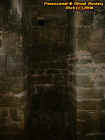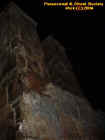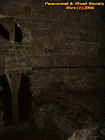|
|
||
|
A man by the name John Moultrie was given many grants in the mid 1700s and one of those was a plantation he called Rosetta. He installed a manager on the property to watch over it and by 1777 the main house, outbuildings, barns and slaving housing were completed. This plantation mainly grew indigo, rice, some corn, sugar cane and provision foods for the slaves. Since Moultrie was from Britain when they ceded Florida back to Spain the Rosetta was abandoned. By 1804 a man by the name John Bunch was granted the plantation. In 1824 he sold 2,175 acres and 90 slaves to a man by the name Thomas Dummett. In 1825 he created what was known as the first steam powered sugar mill. Thomas Dummett was an officer in the British Marines and he purchased two plantations in Eastern Florida containing over 3,000 acres one of them being the Rosetta which of course the name was changed to the Dummett Sugar mill. For some reason Dummett had failed to produce sugar cane on his east Florida land as this was a very productive crop on most plantations. He traveled to the West Indies and recruited a Sugar Specialist and eventually the Dummett Mill was booming with Sugar Cane Fields, a Rum Distillery and a very booming sugar mill which was the first steam powered one. Although Dummett had acquired the plantation which had a big log house which the Dummett family resided in the Sugar Mill and The Distillery were all built newly by Thomas Dummett. It was said that Bermuda Grass, Oak Trees and Palmettos surrounded the plantation. The big log house was a place of many festive parties, dinners and furnishings of claw footed tables and family portraits. Dummett's daughter Anna was playmates with many of the slaves and taught them how to read. Dummett had a good relationship with the Seminole Indians even some of them would help with the sugar cane during the grinding season when it was busy. At the given time the Seminoles were to be moved from Florida to Oklahoma something which would cause revolt amongst the Seminole tribes. The chief of the Seminoles Billy Bowlegs said "We compare ourselves to a beautiful flower ...growing in poor soil. If that flower is transplanted...it will die." during the Seminole War many plantations were raided including the Dummett Sugar Mill. These were acts of anger as the Seminoles took out there frustrations on the plantations since most of the land at one time belonged to them the best form of control would be to raid these plantations. In 1836 the Dummett family abandoned the sugar mill after the raid of course it never operated again. The Seminoles did burn down the Sugar mill and not much stands today except for a few wells, two chimneys, a few walls made out of coquina, and foundations. So there is definitely a lot of history surrounding this entire area. This is why we could not find the Rosetta plantation it is because its name was changed and now the mystery has been solved. As far as activity here I believe its haunted. Since the barns, house, slave cabins probably sat afar from the sugar mill itself it seems most of the activity is in the woods which surround the Dummett Sugar Mill. One thing we must ask ourselves is does the Dummett family still haunt this coquina structure or the slaves of the past of the Rosetta plantation? You decide! © By Rick-AngelOfThyNight
In accordance with Title 17 U.S.C. Section 107, any copyrighted work in this message is being distributed under fair use without profit or payment to those who have expressed a prior interest in receiving the included information for non-profit research and educational or criticism purposes only. Notwithstanding the provisions of sections 106 and 106A, the fair use of a copyrighted work, including such use by reproduction in copies or phone
records or by any other means specified by that section, for purposes such as criticism, comment, news reporting, teaching (including multiple copies for classroom use), scholarship, or research, is not an infringement.
|
||
|
|
|











